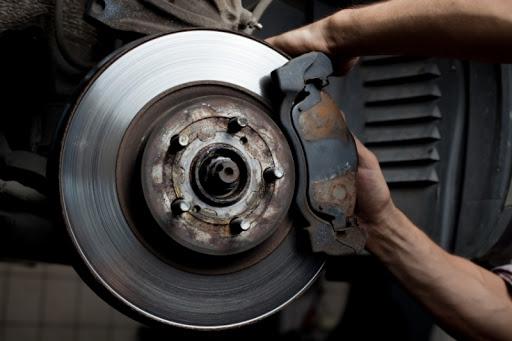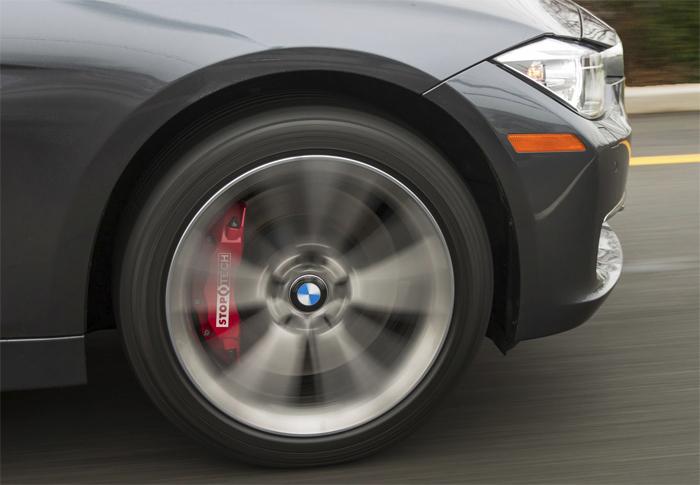Bedding brakes refers to a ‘break-in’ process for the first few miles after replacing the brakes of a vehicle. Debates have been going on for years regarding the necessity of this process. Well, this could be the answer to several brake-related issues, including warped rotors. If you want the brake pads and rotors perform at their best right out of the gate, bedding (breaking-in) is a sensible choice.
Contents
The Necessity of Bedding Brakes
Brake bedding procedure can provide a couple of benefits, including
- Enhanced and long-lasting braking performance; and
- Minimum vibrations and squealing.
When the brake pads are too stiff or run too fast, the pad surface can literally melt and get transferred onto the rotor, creating an uneven surface of both the pad and the rotor. These uneven surfaces can lead to warped rotors and pulsating problems, which can be avoided with a proper bedding-in process.
What you need is the deposit of brake pad materials onto the rotors, not transferring them through melting. Look at a used rotor, and you will see a glossy greyish blue coat. Known as ‘pad transfer’, this is the pad material that settles on the rotor surface through high friction and temperature.

This pad transfer is vital for the braking system to work smoothly. Without it, the brake does not work well when pressing the pedal makes the pad to push against the bare metal surface of the rotor. This metal on metal pressing is not highly effective in stopping the car. However, pressing against the pad material with a steel surface underneath works better.
A set of new rotors don’t have this pad transfer material. Bedding brakes helps with preparing the rotor surface for better performance.
SEE MORE
Is Breaking-in Possible Through Regular Driving?
Many drivers think that gradual breaking-in of the brake pads and rotors through regular driving is enough to keep the braking system running smoothly. While it’s true, bedding brakes can boost the functions of these components and help them perform at a high level right from the beginning. Not to mention reducing the risk of some issues that may plague the braking system in the future.
Breaking-in is a nice technique to stress-test the braking components. It clears unwanted materials from the pad’s surface and makes sure that the rotor has a smooth coating, which prevents scratching on the pads and rotors.
A Guide to How to Bed Brakes
Bedding brakes is nothing complicated, but you have to make sure that the environment is safe by choosing an empty road away from traffic and pedestrians. The process involves stopping the car (applying brakes) frequently, so the road has to be a flat, smooth one where you can easily accelerate to 45 to 50 mph.
This speeding up and down heats up and cools down the brake components repeatedly, causing the deposit of a coat of pad material onto the rotor surface. You should be patient throughout the process and crank up the speed slowly to create a smooth, plane layer of pad transfer.
Here are the steps to how to bed in brakes:
Acceleration and Deceleration
The main steps of breaking in the braking components are speeding the car up and down frequently. Rev up the gear and boost the speed to 35 mph and then apply brake pressure moderately to bring the speed down under 5 mph.
Repeat this process of speeding up and then applying the brake for 2 to 3 times.
Increase the Speed
Repeat the first step of acceleration and deceleration, but with more speed this time. Crank the speed up to 50 mph this time and then apply a hard brake to bring it down under 5 mph. It’s likely to decelerate quickly and a few seconds will take to bring the speed less than 5 mph.
Be careful not to activate the ABS or tire-locking feature, as pressing the brake too hard can trigger them. Repeat this process of speeding up to 50 mph and then applying the brakes to slow the car down at least 4 to 5 times.

Cool the Brake down
When you are done with cranking the car, drive a mile or two to cool the braking system down. Apply the brakes lightly during this time. Then, park the car for at least an hour to give the brakes enough time to cool down. Try not to apply brakes or keep its use to minimal in the next few hours.
Everything’s done? Congrats! You have bedded the brakes.
Pro Tip
Don’t stop completely when cranking the speed to 50 mph and then pushing the brake hard to slow the car down. Abrupt braking can cause the brake pad surface to melt against hot rotors.



